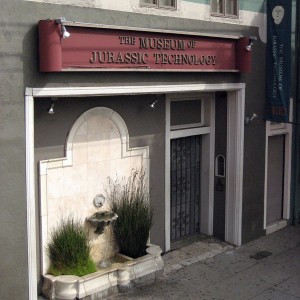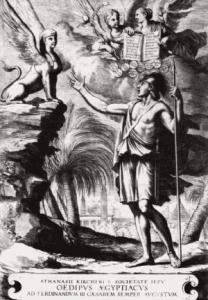
In the Palms District of LA, across from an In-and-Out Burger and a vegan cafe by the peculiarly Californian name of “Native Foods,” is a quaint red-and-green façade. Inside the deceptively small storefront is a museum, but one without the monumental wonder of the Smithsonian or the Met, and certainly not the modern crispness of the Getty or the Whitney. The Museum of Jurassic Technology is a curio cabinet, in the tradition of the Alchemists and Philosophes of the Scientific Revolution and the Enlightenment. Its dark and twisted exhibit halls explore forgotten chapters of humanity from “Dogs of the Soviet Space Program” to “Collections from Los Angeles Area Mobile Home Parks.” Like Hollywood to the north, the Museum exists in a world parallel to, but separate from, the surrounding sun-bleached modernity – and I owe much to that odd world.
I think often of the Museum when my research seems fruitless or wrong. As zoologist and author Marston Bates said “Research is the process of going up alleys to see if they are blind.” Four years ago, as college (and a life of research) approached, my visit to the Museum illuminated the beauty of some of these blind alleys, and the curious characters who go up them.
The most extensive exhibit in the Museum explores the life and work of the peculiar Professor Geoffrey Sonnabend. Through dim exhibit halls, we learned of Sonnabend’s futile efforts to understand the mechanisms of memory, his resulting nervous breakdown, and his tortured love affair with a singer without a memory (think 50 First Dates). The only evidence of the existence of Professor Sonnabend are the Museum’s extensive exhibits, and a book on the man’s surreal love life by Italian author Fabrizio Rondolino. The proprietor of the Museum, one David Wilson, regrets that he has none of the manuscripts Sonnabend wrote on his research, but notes that they are, after all, exceedingly rare. A rational person ought to conclude the man never existed at all, but the Museum gives a sense that the world, like Sonnabend’s forgetful lover, has simply erased all memory of him. Regardless of his existence or lack thereof, the myth of Professor Sonnabend’s Sisyphean, all-consuming research holds up a mirror to our own.

The other exhibit I recall vividly surveyed the life and works of Athanasius Kircher. Unlike Sonnabend, Kircher is fairly well-known outside of the looking-glass world of the Museum. A 17th-century Jesuit scholar and polymath, Kircher is responsible for foundational work in fields from Egyptology to magnetism and geology – and is even more interesting for that much of this work is utterly, laughably wrong. He claimed to have found Atlantis, that Moses and Confucius are in fact the same person, and that Ancient Egyptian was the language of Adam and Eve. He purportedly resurrected a plant from its ashes, published models of subterranean oceans and fires, and believed fossils were the bones of giants and mountains the skeleton of Earth itself. Most flamboyantly, he published tomes of elaborate and florid “translations” of Hieroglyphs which turned out to be a farcical fabrication. Like the museum where his works are housed, it is often unclear whether Kircher is speaking what he believes to be the literal truth, or speaking in an oblique metaphor.
The Kircher exhibit is named “Die Welt besteht aus geheimen Verknüpfungen” which, depending on your interpretation, can be translated “The world is bound in secret knots” or “The world consists of hidden shortcuts.” This title, taken from an illustration in Kircher’s work on magnetism, is oddly applicable to many other fields – from his imagined networks of subterranean fires to the tenuous links he draws between ancient persons, cultures, and languages.

The world is bound in secret knots and hidden shortcuts, and it is up to the researcher to explore and unravel them. Like the ephemeral Sonnabend or the oft-mistaken Kircher, we will often merely cause more tangles, or find that we have taken the long route. The world may forget our work, or find it laughable when held up to future scrutiny – but that does not diminish our contributions to the sprawling, tangled, evolving network of human understanding. The discoveries which never were true are just as important – and perhaps more inspiring, for researchers searching creatively and laterally for the truth – than the mundane facts which replaced them.
– Bennett McIntosh, Natural Sciences Correspondent

